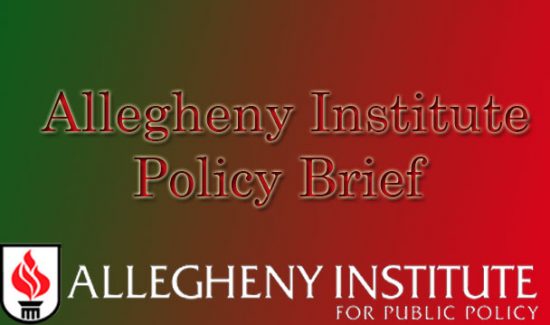Allegheny County Reassessment Lawsuit Becomes a Reality
![]()
Summary: On April 8, Pittsburgh Public Schools filed a lawsuit in the Court of Common Pleas to force Allegheny County to carry out a reassessment. The lawsuit was authorized by a school board resolution in March. County reassessments that went into effect in 2001 and 2013 were the result of court orders.
____________________________________________________________________
The lawsuit, School District of Pittsburgh v. Allegheny County and Sara Innamorato, in her official capacity as the County Executive, seeks two declaratory judgments and an action in mandamus due to violations of the Pennsylvania Constitution’s Uniformity Clause (Article VIII, Section 1) and the U.S. Constitution’s Equal Protection Clause (14th Amendment) from Allegheny County’s use of a 2012 base year with a predetermined ratio (the ratio of assessed to market value set by county government) of 100 percent to assess property.
The lawsuit asks the Court for the following:
- The immediate commencement of a reassessment in Allegheny County;
- A court-mandated timetable for the reassessment’s implementation;
- Court jurisdiction of the matter through its conclusion;
- Other appropriate relief.
Allegations in the lawsuit
The lawsuit’s 13 factual allegations relate mainly to Pennsylvania allowing counties to use a base year to assess property which “is a snapshot in time which essentially ignores any appreciation or depreciation a property may experience after the base year” is “inherently regressive and inequitable in nature.” Unless the state changes the law or a court intervenes, reassessments rarely happen. “As of the filing of this Complaint, Allegheny County has failed to reassess the entire county for a period of twelve years and currently has no public plans to conduct a county-wide reassessment” the lawsuit notes.
The lawsuit alleges that “Allegheny County fails to meet IAAO [International Association of Assessing Officers] standards for uniformity, and its current assessment scheme is a violation of the Uniformity Clause.” This allegation cites the coefficient of dispersion (COD) “which examines ‘the level of variation or horizontal equity and uniformity within a group or class of properties.’” The higher the COD the greater the “degree of variance with respect to the assessment ratios under consideration.”
The COD in recent years exceeded IAAO ranges for single-family homes, condominiums and income-producing properties, leading to “substantial inequities currently existing in Allegheny County” according to the lawsuit. Court-ordered reassessments occurred in four counties with a high COD.
The lawsuit alleges that “a shrinking commercial tax base unfairly burdens residential property owners in violation of the PA & US Constitutions and necessitates immediate remedial action.” Here the lawsuit takes issue with the use of the common level ratio (CLR), which is ‘the ratio of assessed value to current market value used generally in the county as last determined by the State Tax Equalization Board (STEB).”
The CLR is used in appeal hearings (see Policy Brief Vol. 22, No.27) and courts have noted “under normal economic conditions the STEB-calculated CLR tends to diminish each year, reflecting ongoing inflation and real estate appreciation.” In Allegheny County there is the additional issue of still-active litigation over the submission of sales data by the county to STEB. The 2020 CLR was revised from 81.1 to 63.5, the 2021 CLR was 63.6 and the 2022 CLR is 54.5.
The lawsuit calls the CLR a “blunt one-size-fits all tool for measuring market appreciation, that equally applies to all property types despite being derived almost entirely for residential property sales … the residential market has experienced healthy and substantial growth in recent years, commercial properties, in general, and office buildings in particular, have experienced a market contraction and regression.” Appeal decisions on Downtown commercial buildings by the appeals board could result in $10 million in tax refunds and could reduce assessed values by “a half-billion dollars before all is said and done” according to a recent news article.
Thus, “the School District’s rights as a taxing authority are directly affected by Allegheny County’s assessment practices, and the School District (like all similarly situated taxing authorities) is aggrieved by the implementation of an unconstitutional assessment scheme within Allegheny County.” Whether other school districts or municipalities will join the lawsuit is not known.
How will the county react?
In a statement in reaction to the lawsuit, the county executive’s spokesperson stated that “ideally reassessments would be state-mandated, mundane, regular occurrences and not once per decade shocks to the system.” The statement also said that “any reassessment must be revenue neutral and not a backdoor tax hike for the people of Allegheny County …”
State law has permitted base-year assessments since 1982 and is out of step with most other states on reassessment frequency. State law also requires counties and municipalities to adjust millage rates to be revenue-neutral following a reassessment. A separate vote must be taken to raise millage rates on a reassessment. School districts must stay within the previous year’s Act 1 index when new values are adopted.
The county executive noted support for regular reassessments during the campaign for the office last year and for state-mandated reassessments more recently. It is unknown how a majority of County Council feels about the topic. The county government has passed a number of assessment and appeal legislation in recent years but not a reassessment ordinance. The time for the county to conduct a reassessment free of being sued has expired.
Could the lawsuit jolt the county into action in order to avoid litigation? Two counties, Lackawanna and Schuylkill, were sued but approved moving forward with a reassessment prior to a court order. The courts will oversee each reassessment and new values should be in place by 2026. Ending the lawsuit by agreeing to a reassessment could certainly happen in Allegheny County.
Or the matter could proceed through the courts. The state Supreme Court has ruled against Allegheny County (lawsuit in 2005 and reassessed values effective 2013), Washington County (lawsuit in 2008 and reassessed values effective 2017) and Beaver County (lawsuit in 2015 and reassessed values effective 2024).
There is a chance that the lower courts might rule in Allegheny County’s favor which could encourage the county to fight the matter all the way to the Supreme Court. But if the county loses in the lower courts it is likely to fight all the way to the Supreme Court.
Is the county hoping that the General Assembly will intervene? When the school board passed the resolution authorizing the lawsuit, an Allegheny County state senator said he would propose legislation for a statewide reassessment cycle. This type of proposal has not surfaced since 2019 and that one never made it past the status of a co-sponsorship memorandum.
Depending on whether the lawsuit is settled, or it weaves its way through the courts, once a reassessment is begun, it will take some time to assess 583,000-plus parcels.
Conclusion
The best course is for Allegheny County to move forward and avoid fighting the lawsuit by agreeing to a reassessment. It then can go one step better by enacting a regular reassessment cycle for the county. We suggest every three years.
This would be a definitive break from the dubious “standard” that has been in place for the past two decades. It would reduce appeal activity, eliminate the sticker shock that many taxpayers experience when a long period of time passes between reassessments and make conducting subsequent reassessments much less cumbersome.
Eric Montarti, Research Director
If you wish to support our efforts please consider becoming a donor to the Allegheny Institute.The Allegheny Institute is a 501(c)(3) non-profit organization and all contributions are tax deductible.Please mail your contribution to:
The Allegheny Institute
305 Mt. Lebanon Boulevard
Suite 208
Pittsburgh, PA15234






